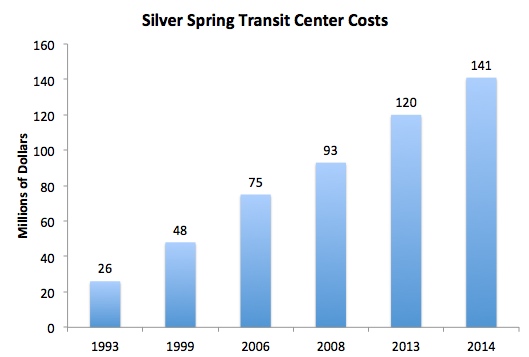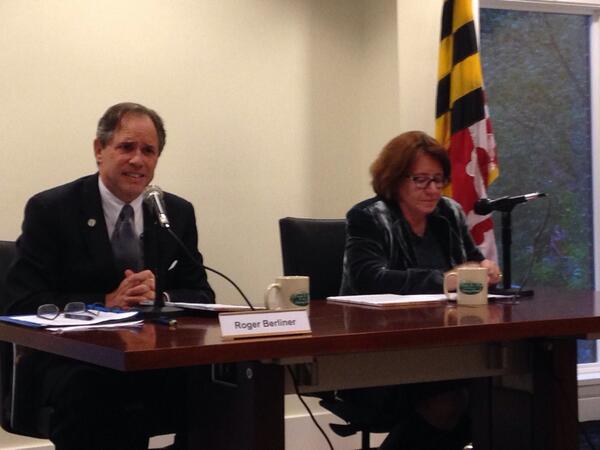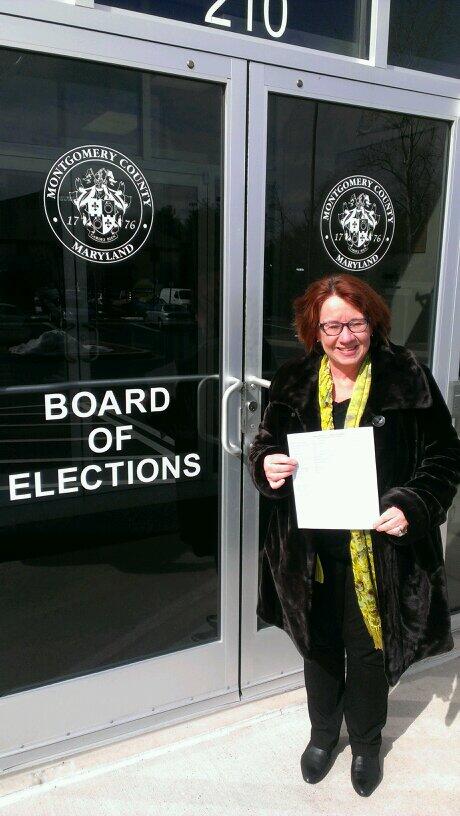Opportunity Costs
The choice to spend vast sums of money on one project requires foregoing other choices. The tangled finances for the Purple and Red Lines (see also here) render it especially obvious. When the fares from Baltimore’s public transit system are needed as a backstop in case Purple Line fares are lower than hoped, the use of the Transportation Trust Fund (TTF) for non-Purple purposes is obviously going to be quite limited.
The plans to move ahead also with Baltimore’s Red Line should further assure that the TTF is tied up for literally decades. Indeed, the two projects have been closely tied together in order to build political support. It is hard to imagine moving ahead with one project without the other, as legislators in one metro area are unlikely to want to fund an incredibly expensive project in the other unless their constituents share in the benefits.
Existing Transit Needs
Montgomery and Prince George’s County already have an extensive public transit system. Both are integrated into WMATA’s Metro and Metrobus system. Each operates its own bus system: RideOn and TheBus. Both are also tied into the MARC system.
All parts of the system have suffered from cutbacks and need investment in infrastructure. Metro, the lungs of Washington’s transit system, remains in particularly dire need of money to maintain and to upgrade its infrastructure. Placing so many chips on the Purple Line will constrain the ability of the State to aid Metro–Montgomery and Prince George’s cannot expect to get all of Maryland’s transportation funding.
Less widely heralded in Montgomery in the face of perennial Metro problems–endless single tracking, escalators that don’t work, overly crowded trains at rush hour despite stagnating ridership–have been the cutbacks to MARC and Ride-On. Oddly, we reduced transit service designed to connect to the Purple Line even as we move forward with building it.
Foregoing Other Transit Opportunities
Some key supporters of the Purple Line recognize these implicit tradeoffs even if they don’t advertise them. In the at-large County Council debate in Chevy Chase, new Council President George Leventhal derided Councilmember Hans Riemer’s support for additional Ride-On service. He and other Purple Line supporters have also expressed great skepticism about the proposed countywide bus-Rapid Transit System (RTS).
The irony here is that for the cost of building the Purple Line, we could build a RTS that would serve all parts of the County. Indeed, a Purple Line incorporated into an RTS would accomplish most of the goal at far less cost than the proposed light-rail system even according to MTA’s own analysis (see also here).
Purple Line supporters like to accuse opponents of being anti-transit–it’s a good simple communication meme that boils down a complex decision to good versus bad. Except that wanting to spend transportation dollars wisely and get the most for our tax dollars is pro-transit. Opposition to expanding bus service and continued negativity regarding an RTS that could serve the whole county sure doesn’t sound pro-transit.
The Bottom Line
We shouldn’t starve our existing transit system and forego future opportunities in order to build the Purple Line and the Red Line. Ironically, we could build cheaper RTS versions of both that would save the State billions–not chump change–and allow for additional transit and road improvements that would truly aid economic development and the ability of all Marylanders to reach jobs far more broadly. Now that’s smart growth.







